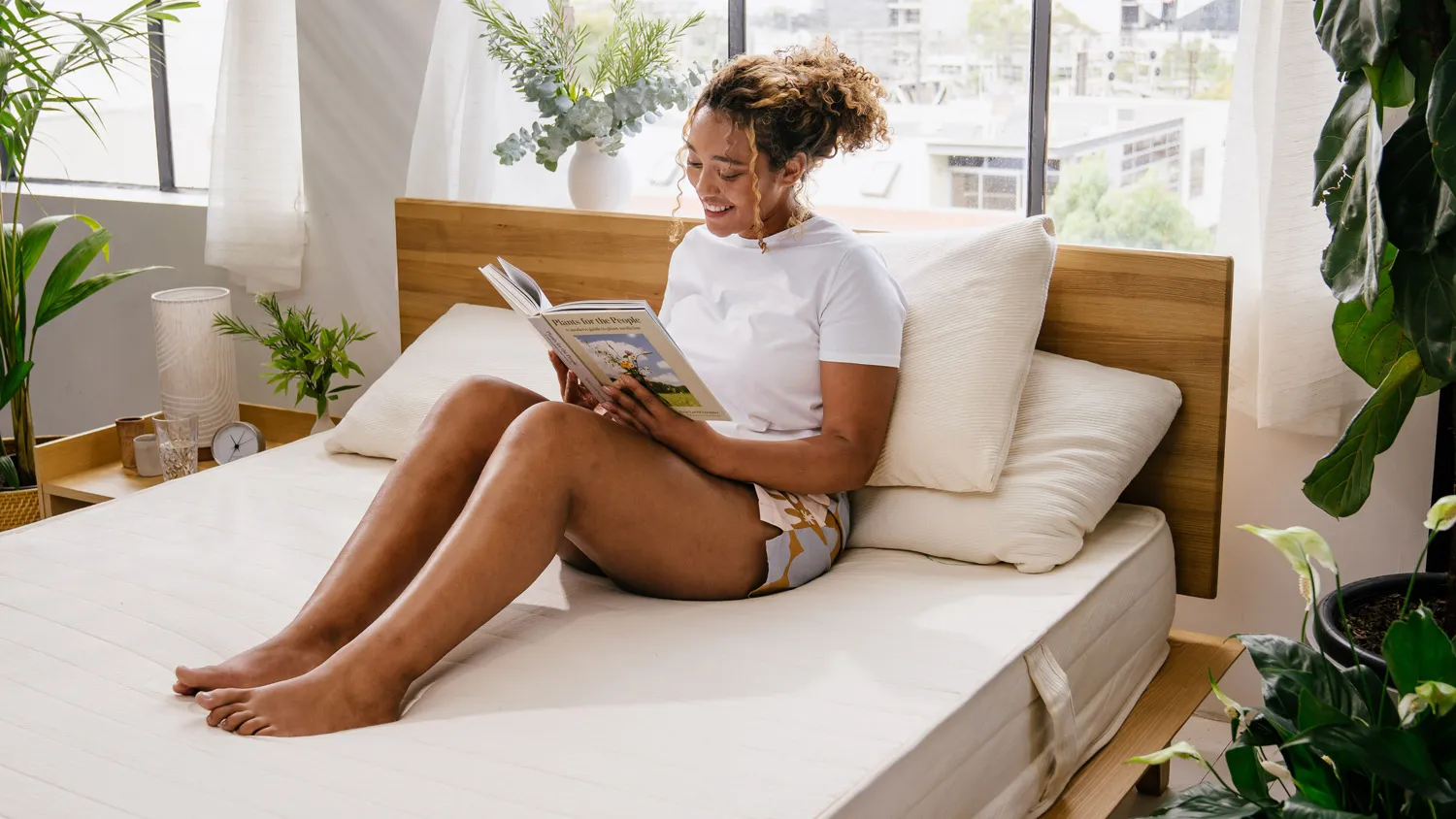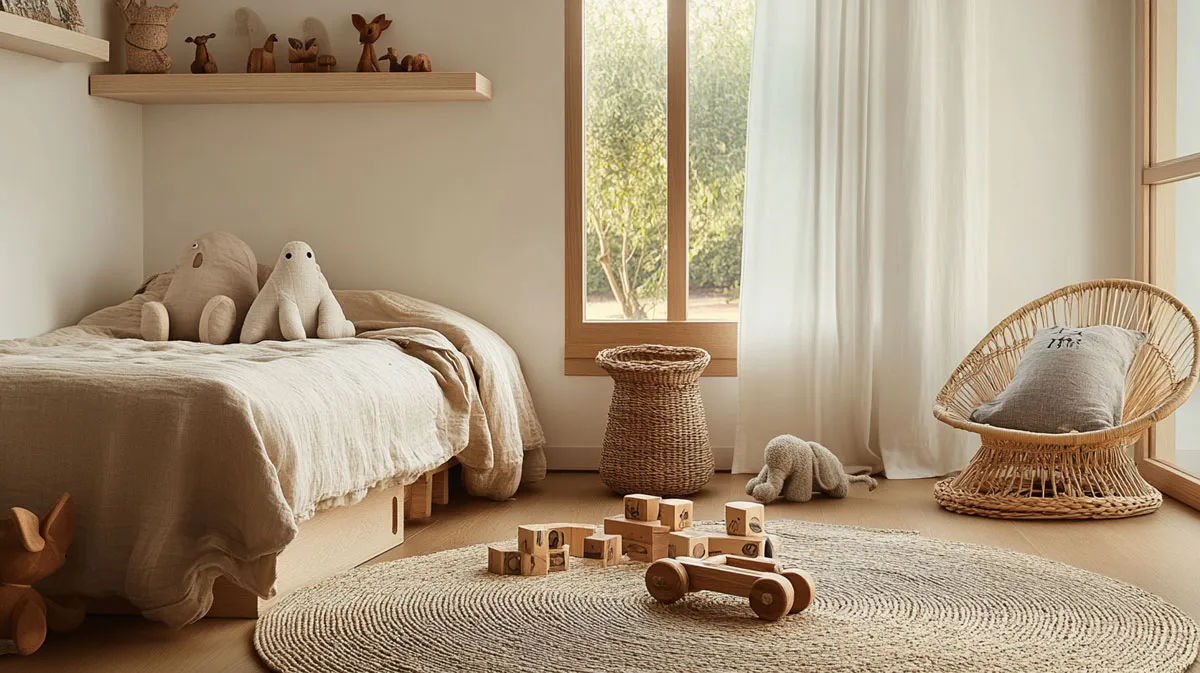How to Choose the Perfect Children's Bed And Furniture
When creating the perfect bedroom for your child, there's more at stake than just picking cute furniture and matching colours. Your little ones will spend nearly half their early life in this space - sleeping, playing, and growing during their years.
These choices become even more critical for babies and children. Their developing immune systems and rapidly growing bodies make them particularly vulnerable to environmental influences, making every material choice significantly more important than we might realise.
But there's the elephant in the room regarding children's beds and furniture—many parents don’t realise that the “new furniture” smell is chemicals being released into the air. These hidden toxins can turn a cozy bedroom into an ongoing chemistry experiment, from off-gassing furniture to VOCs (Volatile organic compounds) in paints and mattress.
Finding non-toxic furniture that won't break the bank is a fair struggle for Aussie parents. It's like trying to score a seat in the shade at the MCG in January—nearly impossible. But don't worry, this article has you covered with solutions that'll save you a bundle and create a healthier sleep environment for your little tackers.
How to pick the right bed frame for your child’s room
Let's get straight to the heart —choosing a bed for your child feels like an impossible puzzle of budget versus health concerns. While solid, untreated wood is the gold standard for a chemical-free sleep environment, these beds often cost well over $1,000, making them out of reach for most families.
Conversely, MDF (Medium-density fiberboard) and particleboard options are budget-friendly but typically contain toxic adhesives and formaldehyde.
Take Koala's Joey Bed Base as an example. Sure, it's cute and adaptable, but strip away the marketing, and you'll find it's made from polyester and plywood - essentially the same materials you'd get from a $100 Kmart bed.

If you really want to find a non-toxic solution for a children's bed, one option is to buy an adult bed. While it might seem unconventional and a bit pricey, you could skip the traditional kids' bed route entirely and invest in a quality adult single or long single bed.
For those seeking the best, the Harrie Growing Bed, at $1,300, stands out as one of the finest children's beds available. Its height-adjustable design grows with your child, and its solid construction offers the non-toxic peace of mind that parents are after.
Another solid option is Eva's Timber Bed Frame - at $1,200, it's a significant investment, but it offers solid wood construction that should last well into the teenage years. However, even these premium options have some compromises, and if you look at beds under $1,000, you'll continue to encounter the same health versus affordability issues.
- Engineered wood (MDF or plywood) construction.
- Synthetic finishes and varnishes.
- Chemical adhesives.
- Plastic components.
- Polyester covers and materials.
This is why we'll be sincere: Don't stretch your budget thin to find the perfect non-toxic bed frame. Instead, focus your investment on what matters most—a quality natural mattress and organic bedding that directly affect your child. You'll get the most significant impact on your health dollars and can upgrade the bed frame when your budget allows.
Your kid’s mattress: The most important investment you'll make
In their first years, babies spend more time on their mattress than anywhere else - up to 20 hours a day! Even as they grow older, children need 10-13 hours of quality sleep. This means your child will spend thousands of hours in direct contact with their mattress and bedding during their most crucial developmental years. That's why choosing the right mattress isn't a decision to take lightly - it's an investment in their health, development, and well-being
Those budget-friendly synthetic foam mattresses? They're essentially blocks of processed petrochemicals, slowly releasing VOCs right where your child breathes. Sure, they might save you a few hundred dollars now, but at what cost to your child's health?

Why natural mattress materials are worth every dollar
When it comes to your child's mattress, natural materials aren't just a luxury - they're an investment in your child's health. Natural fibres like latex create a non-toxic sleep environment while providing essential benefits like temperature regulation, moisture control, and proper support for growing bodies. Unlike synthetic alternatives (polyester, synthetic memory foam, etc), these materials work with your child's body, not against it.
| Natural Latex | Memory Foam | Pocket Springs (Hybrid) | Coconut Coir |
|---|---|---|---|
| Highly Recommended | Bang for your buck | Recommended | Recommended |
| Offering exceptional breathability and naturally hypoallergenic properties. With remarkable longevity (25+ years), it provides the ideal balance of support and comfort crucial for developing bodies. Its natural resistance to dust mites and mould creates a healthier non-toxic sleep environment for your kids. | While providing good pressure relief, memory foam tends to retain heat and may not offer optimal spine support for growing children. Lower-quality options deteriorate quickly and can release volatile organic compounds (VOCs), making this your least recommended option for children's mattresses. | Delivers excellent ventilation and responsive support that is beneficial for children. Quality varies significantly between models, with premium options thoughtfully combining supportive springs with comfortable top layers. For the best results, prioritise hybrid models featuring a natural latex comfort layer. This layer combines the benefits of spring ventilation with the supportive properties of latex. | This 100% natural material is ideal for infants and young children, providing firm support that facilitates healthy early development. It also offers superior ventilation and natural antimicrobial protection. For enhanced comfort, look for options where coconut coir is thoughtfully combined with other natural materials. |
Choosing the right mattress is the first step in creating a healthy sleep environment for your child. Our guides provide more detailed information and specific recommendations.
Should you buy IKEA furniture for your kids?
As we've seen with beds, finding affordable, non-toxic furniture can be challenging. IKEA offers some decent options, such as the KURA bed frame. Made primarily from solid pine, it's one of their better choices for children over 3 years old, offering a sturdy, relatively low-chemical option compared to their particle board furniture.
Here's our non-negotiable advice: stay far from IKEA children's mattresses and cots. Children need the highest safety standards and the cleanest materials during these sensitive early years. While saving money might be tempting, this is absolutely where you shouldn't compromise.
Think about it - your child spends up to half a day with their face and body pressed directly against these materials. During these crucial years up to age 10, their bodies are developing rapidly, and their immune and respiratory systems are particularly vulnerable.
Those $99 foam mattresses and synthetic bedding sets might save you money, but the potential impact on your child's health isn't worth the short-term savings. Invest where it counts most—in quality mattresses and bedding—and find clever ways to economise on furniture with less direct contact with your child's developing body.
So yes, you can buy some furniture from IKEA—just be selective and prioritise their solid wood options over particleboard for your child's room. Check out the SMÅGÖRA and SUNDVIK ranges. They're not perfect, but if you're on a tight budget, these collections offer better options than most of IKEA's other children's furniture.

Furniture: creating a healthy space beyond the bed
Like with beds, finding truly non-toxic furniture for your child's room can feel like a mission impossible without spending a small fortune. And yes, you'll face the same challenges: The most affordable options come with MDF, chemical finishes, and synthetic materials. But don't worry - we'll help you navigate this with practical solutions.
Your child will interact with their room furniture daily - from storage units to desks and chairs. While solid wood furniture with non-toxic finishes would be ideal, we know these often come with eye-watering price tags. Here's how to approach each piece:
Storage Solutions
- Open shelving over enclosed cabinets (better ventilation, less off-gassing)
- Fabric storage bins instead of plastic ones
- Second-hand solid wood pieces (already off-gassed)
- Metal alternatives were practical
Seating Options
- Invest in a quality ergonomic chair (crucial for proper posture)
- Choose natural fabrics for cushions and covers
- Consider washable, non-toxic covers for easy cleaning
- Look for adjustable options that grow with your child
Desks and Work Surfaces
- Adjustable height features when possible
- Good ventilation space around work areas
- Natural lighting position
- Easy-to-clean, chemical-free surfaces
Play Area Furniture
- Simple, sturdy pieces over complicated units
- Natural materials for play mats
- Avoid synthetic foam padding
- Choose washable, natural fibre cushions

Children's bodies are most vulnerable to chemical exposure during their early developmental years. During this crucial period, their immune systems are developing, their respiratory systems are maturing, and their bodies are more sensitive to environmental toxins than adults. This early exposure can influence the development of allergies and sensitivities, such as asthma, which may affect them throughout their lives.
While you might have less control over their environmental choices once they reach adolescence (let's face it—teenagers have strong opinions about their rooms!), you can significantly impact their long-term health by minimising chemical exposure during these formative years. Focus your "health budget" on creating the cleanest possible environment while their bodies are most vulnerable. The foundations for health are laid in these early years, and making wise choices now can help prevent issues later.
Handy tip: To create a healthier environment, make sure to air out the room by keeping the windows open after setting up a new mattress or furniture. This helps get rid of any funny smells and chemical nasties. This simple habit reduces your little one's exposure to those initial chemical emissions that tend to be strongest in the first few days after unpacking. Your kids' lungs will thank you for it!
The minimalist approach: less is more (and healthier!)
Here's a perspective shift that could simplify your child's room setup while protecting their health: Embracing minimalism isn't just about aesthetics - it's a practical solution for creating a healthier sleep and play environment.
Think about it: Every item in your child's room, from plastic toys to treated fabrics, is a potential source of chemical exposure. By simply having fewer items, you're automatically reducing their contact with harmful substances. But the benefits go far beyond just health:
- Less furniture means more floor space for play and movement.
- Fewer toys often lead to more creative, focused play.
- Clear spaces mean less dust and better air quality.
Quality furniture over quantity.
Quality pieces last longer and tend to be made with better materials. While the initial investment might be higher, you save money in the long run while protecting your child's health. Instead of filling the room with cheap furniture and accessories, invest in fewer, better-quality pieces:
- One solid wooden shelf instead of multiple plastic storage units.
- A few natural fibre blankets rather than lots of synthetic throws.
- Selected open-ended toys made from natural materials.
- Simple, functional furniture that serves multiple purposes.
A minimalist approach doesn't mean a sterile, empty room. It means thoughtfully choosing items that support your child's development while maintaining a healthy environment. Sometimes, the best investment in your child's room is deciding what not to buy.

Keeping your child's room clean and healthy
Maintaining your child's room is crucial to creating a healthy sleep environment. The good news is that you don't need harsh chemicals to keep things clean and fresh.
Creating a clean environment isn't about using the most potent cleaning products - it's about consistency and using the proper methods:
- Wash bedding weekly at up 60°C to eliminate dust mites and allergens.
- Air out the room for 15 minutes daily (yes, even in winter!) to reduce VOC buildup.
- Use natural cleaning solutions (white vinegar and water work wonders!).
- Vacuum under beds and furniture regularly - dust bunnies aren't as cute as they sound.
Simple DIY cleaning solutions worth trying:
- White vinegar + water (1:1 ratio) for general cleaning.
- Baking soda for tough stains.
- Pure castile soap for fabric cleaning.
- Essential oils (lavender, tea tree) for natural freshening.
Harsh chemical cleaners can leave residues that your child might breathe in or absorb through their skin. Gentle, natural cleaning methods aren't just better for the environment - they're better for your child's developing immune system.
Closing thoughts: A personal note on children's health
As someone who grew up with asthma and dealt with numerous respiratory issues and allergies, I understand firsthand how environmental factors can impact a child's health. It wasn't until later that we discovered the root causes of many of these problems - the materials surrounding us in our everyday environment.
While every child is different, with varying predispositions to allergies, asthma, and sensitivities, reducing exposure to endocrine disruptors and harmful chemicals is a simple step that can make a lifetime of difference. Some might think we're being overly cautious, but there's a reason why millennials and younger generations show increased sensitivity compared to previous generations.
Think of it this way: Investing in a healthier environment during your child's first decade isn't just about preventing potential issues - it's about giving them the best possible start in life. And here's the practical side: that quality latex or hybrid mattress you invest in today? It's likely to last through their university years, making it a health investment and a financial one.
Remember, creating a healthy sleep environment doesn't have to be perfect - it's about making the best choices you can within your means. Start with what matters most (mattress, bedding, and key furniture pieces), and build from there. Your child's developing body will thank you for it.

